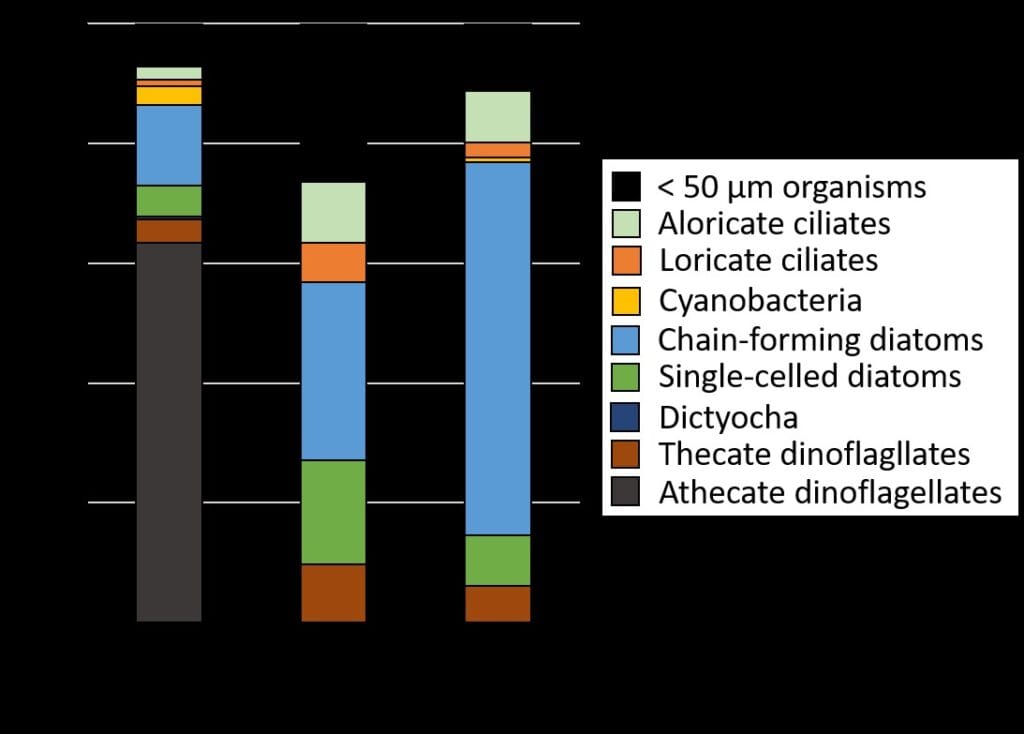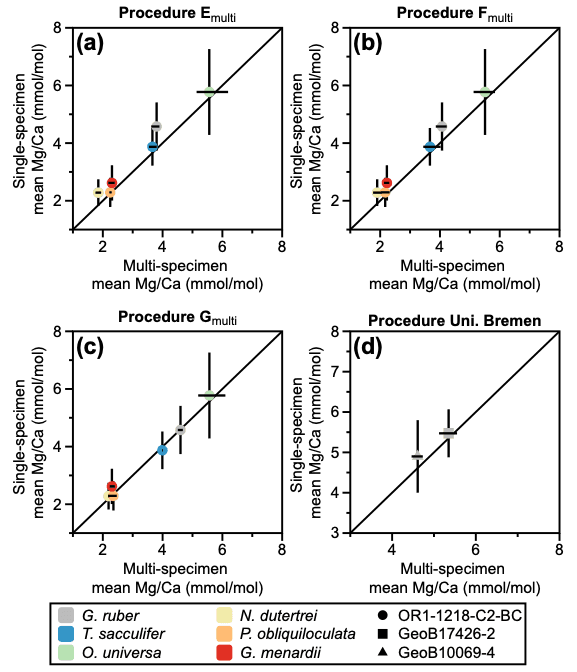The East China Sea is a highly productive marginal sea in the Western Pacific, where the spatial distribution and community dynamics of plankton significantly influence food web energy transfer and the biomass of larger, high trophic level organisms. Under climate change, shifts in the environment affect the pico- and microplankton at the base of the food web, which in turn impacts fishery productivity. However, research encompassing sufficient spatial and temporal scales in this region remains limited.
To better understand the spatiotemporal variation of pico- (<50 μm) and micro- (20–200 μm) plankton in the East China Sea, and to examine how plankton communities respond to long-term environmental change, Dr. Chia-Ting Chen, Assistant Professor Pei-Chi Ho, and Distinguished Professor Chih-hao Hsieh of IONTU analyzed community compositions of pico- and microplankton in the region. From 2009 to 2021, we used FlowCAM to image and analyze plankton from the euphotic zone, assessing changes in species composition and cell size, and linking changes to environmental factors and climate indices.
The results showed that over the past decade, sea surface temperature in the East China Sea has significantly increased, while concentrations of nitrogen, phosphorus, and silicate nutrients have declined, leading to a decrease in aloricate ciliates and chain-forming diatoms. Nutrient levels were positively correlated with the Pacific Decadal Oscillation (PDO) index, whereas the diatom-to-dinoflagellate ratio was negatively correlated with PDO, indicating the impact of long-term climate variability on dominant phytoplankton groups.
Spatially, areas with higher salinity offshore showed relatively higher biomass of diatoms and ciliates, resulting in flatter normalized biomass size spectrum (NBSS) slopes. In contrast, steeper NBSS slopes in winter nutrient-rich zones indicated a higher relative biomass of picoplankton, possibly due to limited light availability from strong water column mixing and grazing pressure that reduced the abundance of larger phytoplankton. Summer observations revealed that dinoflagellates dominated in regions influenced by the China Coastal Current, while diatoms were dominant in areas affected by the Taiwan Warm Current and the Kuroshio Current.
This study provides insights into the spatiotemporal dynamics of plankton communities in the East China Sea under changing climatic and environmental conditions. It highlights the importance of environmental drivers in shaping plankton communities and demonstrates how semi-automated imaging tools like FlowCAM can enhance the efficiency of long-term plankton monitoring.
The results of this study have been published in Progress in Oceanography.
Chia-Ting Chen, Pei-Chi Ho, Fan-Sian Lin, Esther Wong, Fuh-Kwo Shiah, Gwo-Ching Gong, Chih-hao Hsieh (2025) Spatiotemporal variation in marine plankton communities driven by environmental changes in the East China sea. Progress in Oceanography, Volume 232, 103434.

Figure 1: Temporal biomass variation of plankton in the East China Sea from 2009-2021.

Figure 2: Microplankton biomass composition in the areas influenced by China Coastal Current (Cluster 1), Taiwan Warm Current (Cluster 2), and Kuroshio Current (Cluster 3).








